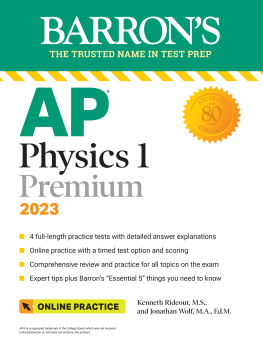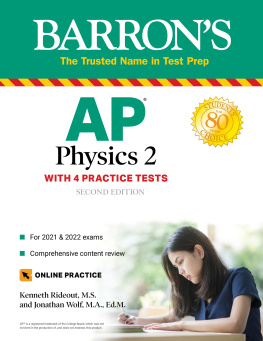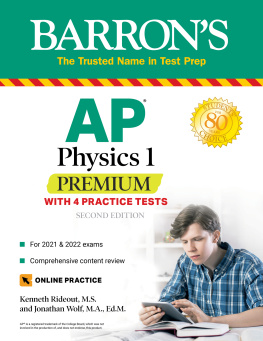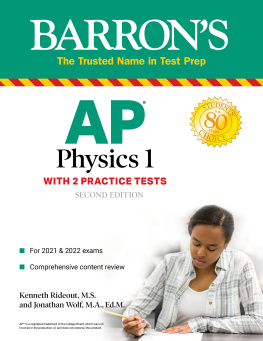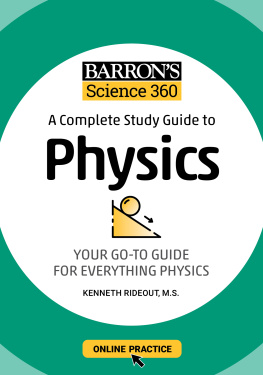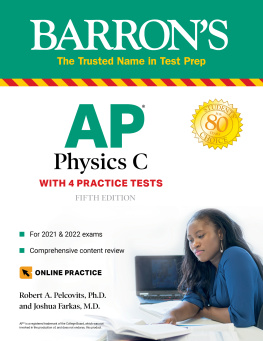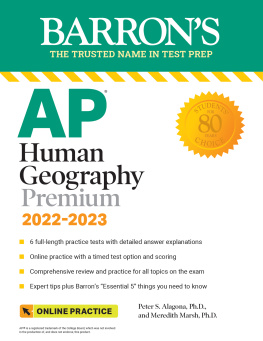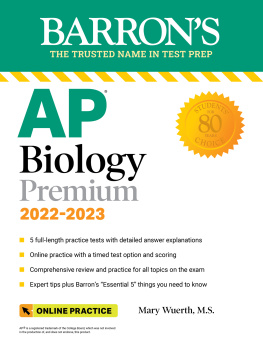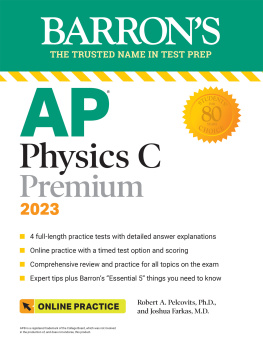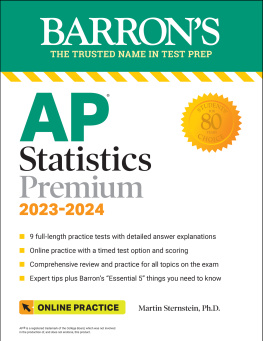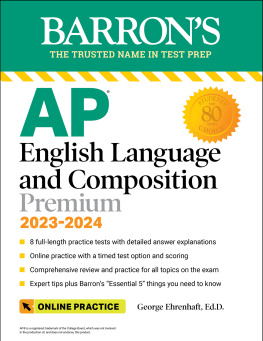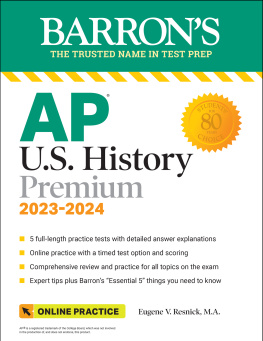Table of Contents
Guide
Page List
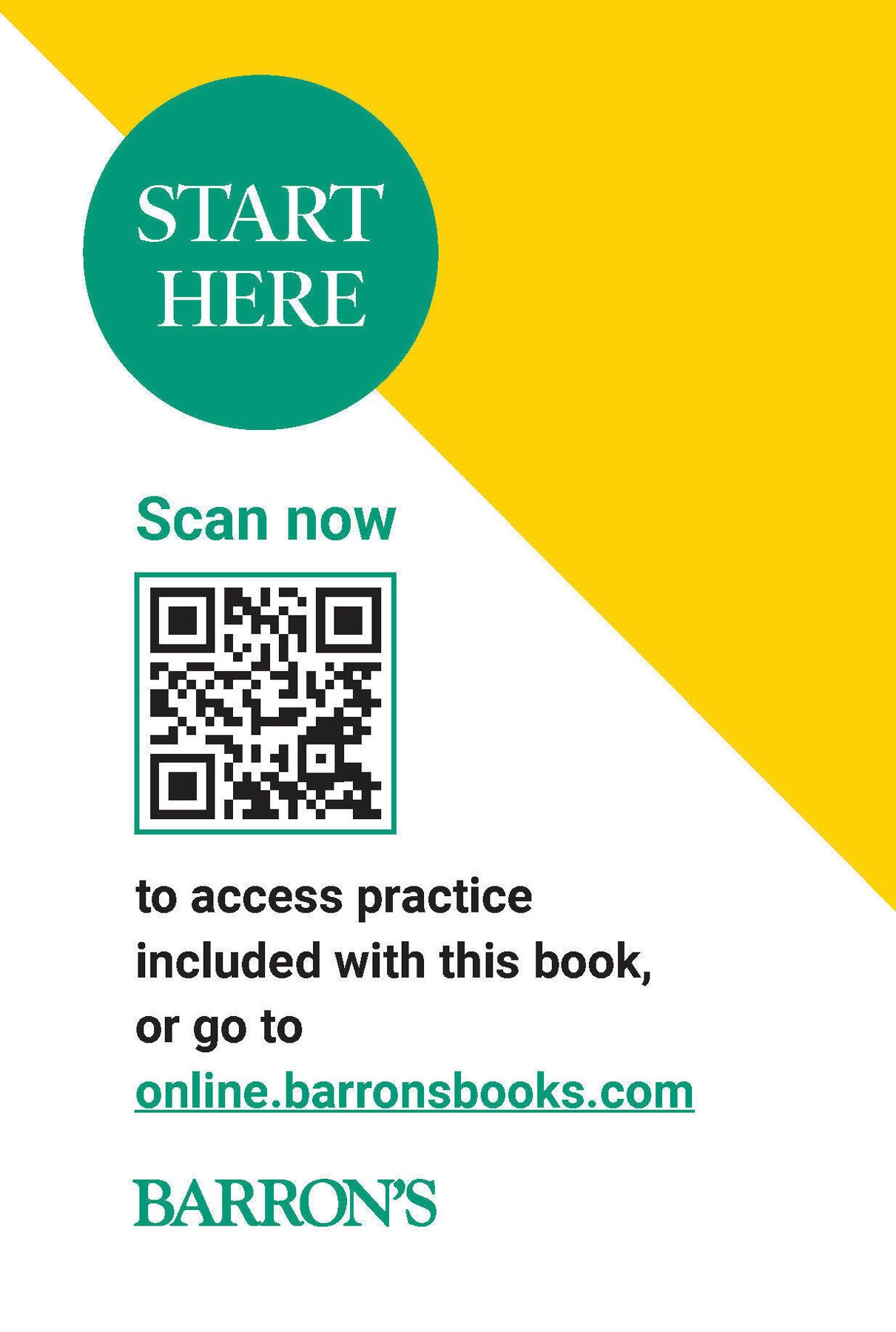


Copyright 2022, 2020, 2018, by Kaplan North America, LLC, DBA Barrons Educational Series
All rights reserved.
All rights reserved under International and Pan-American Copyright Conventions. By payment of the required fees, you have been granted the non-exclusive, non-transferable right to access and read the text of this eBook on screen. No part of this text may be reproduced, transmitted, downloaded, decompiled, reverse engineered, or stored in or introduced into any information storage and retrieval system, in any form or by any means, whether electronic or mechanical, now known or hereinafter invented, without the express written permission of the publisher.
Published by Kaplan North America, LLC, DBA Barrons Educational Series
1515 West Cypress Creek Road
Fort Lauderdale, FL 33309
www.barronseduc.com
eISBN: 978-1-5062-8111-7
10987654321
Kaplan North America, LLC, DBA Barrons Educational Series print books are available at special quantity discounts to use for sales promotions, employee premiums, or educational purposes. For more information or to purchase books, please call the Simon & Schuster special sales department at 866-506-1949.
Ken Rideout has a B.S. in Honors Physics from Purdue University and an M.S. in Physics from Carnegie Mellon University. He has been teaching high school physics for more than fifteen years in the Boston area and is currently the science department head at Wayland High School in Wayland, MA.
Jonathan Wolf has been teaching physics at both the secondary school and college levels for more than thirty-five years, and has also been an adjunct assistant professor of astronomy at Hofstra University. He has published over forty professional papers in the fields of astronomy, physics, and physics education and served for more than ten years as assistant editor for The Science Teachers Bulletin published by the Science Teachers Association of New York State (STANYS). In addition to being the author of Barrons AP Physics B, he is also the author of Barrons College Review: Physics and previously was co-author of Barrons SAT Subject Test in Physics. Jonathan Wolf is currently an adjunct professor of physics at Fairleigh Dickinson University.
Table of Contents
Diagnostic Test
First, take the Diagnostic Test to gain an understanding of your strengths and weaknesses. Read the answer explanations for all questions, as they provide valuable insight into correct and incorrect answers. Refer to the Answer Key to identify the areas you need to brush up on. Here you can find the Topic and Chapter numbers that correspond to each of the questions in the Diagnostic Test.
Review and Practice
This books review chapters that align with the curriculum for the AP Physics 1 course. You may find it helpful to read the text along with your textbook when you are first learning the material and studying for course exams, or you may choose to read the chapters together as a review after you have completed most of your AP Physics 1 course. By answering the practice questions that follow each chapter, you will be able test your learning as you progress through the book.
Practice Tests
The final section of the book offers the opportunity to take two full-length practice tests that include all question types found on the actual exam. A comprehensive answer explanation is provided for each question.
Online Practice
In addition to the diagnostic test and two practice tests within this book, there are also two full-length online practice exams. You can take these exams in practice (untimed) mode or in timed mode. All questions include answer explanations.
As you review the content in this book to work toward earning that on your AP Physics 1 exam, here are five things that you MUST know above everything else:
| Know your kinematics: Know the difference between velocity and speed, displacement and distance. Know to use equations of motion only for problems involving constant acceleration and to otherwise use graphical methods to analyze the kinematics. Find hidden information within the problem (initial or final speeds of zero, accelerations of 9.8 m/s2). Keep your x-and y-motions separate: the only connecting variable is time. |
| Know your dynamics: Start all analyses with a free-body diagram. Align your coordinate system with the direction of acceleration (if known). Be alert for situations that require a net force but no corresponding change in speed (centripetal forces). Do not add additional forces in an ad hoc manner. Decide on the number of forces based on the objects interactions, not its motion. |
| Know your conservation laws: If all the masses and motions of interacting particles are specified, conserve the net values of energy, momentum, and angular momentum. If the object in question is interacting with an object whose masses and motions are unspecified, then use the interactions to calculate changes in conserved quantities. When using conservation of energy, be alert to work done by nonconservative forces. When using conservation of momenta, remember that both linear and angular momenta are vector quantities. |
| Look for crosscutting questions: This exam is designed to probe for your understanding of the connections between the various topics covered in a first year physics class. It is not enough to be able to solve the classic problem types. You must be able to solve multitiered problems (e.g., apply conservation of angular momentum and dynamics at the same time within one problem) and apply your knowledge to new situations. |
| Understand the underlying concepts: Be sure to understand how to explain the whys, not just to calculate a numerical solution. Novel situations or new types of problems can be solved by students who understand the concepts behind the equations. |
In this review book, you will find all the material you need to review and prepare for the AP Physics 1 exam, a first-year precalculus course. This book is a newly updated, targeted, and enriched version of Barrons AP Physics 1, including the 2021 College Board update regarding the new scope of their exam.
Each chapter has review questions that vary in style and level of difficulty. These are intended to test your level of understanding of the review material. Some of these chapter questions may be easier, harder, or in a slightly different style from the actual AP exam as they are limited to the content of that particular chapter. Likewise, each chapter has a mix of traditional problem-solving examples as well as the more text-based and conceptual type of questions that appear on the AP Physics 1 exam. The tests, on the other hand, are broad in scope and draw from several different content areas at once. Included in this book, as well as online, are several full-length practice tests that mirror the actual AP exams in style, content, and difficulty. All questions have full solutions and explanations provided. Before the review chapters is a diagnostic test that can be used for practice or to guide you specifically to certain content areas you may need to review before the AP exam. Additional problem-solving strategies are provided throughout the book.

